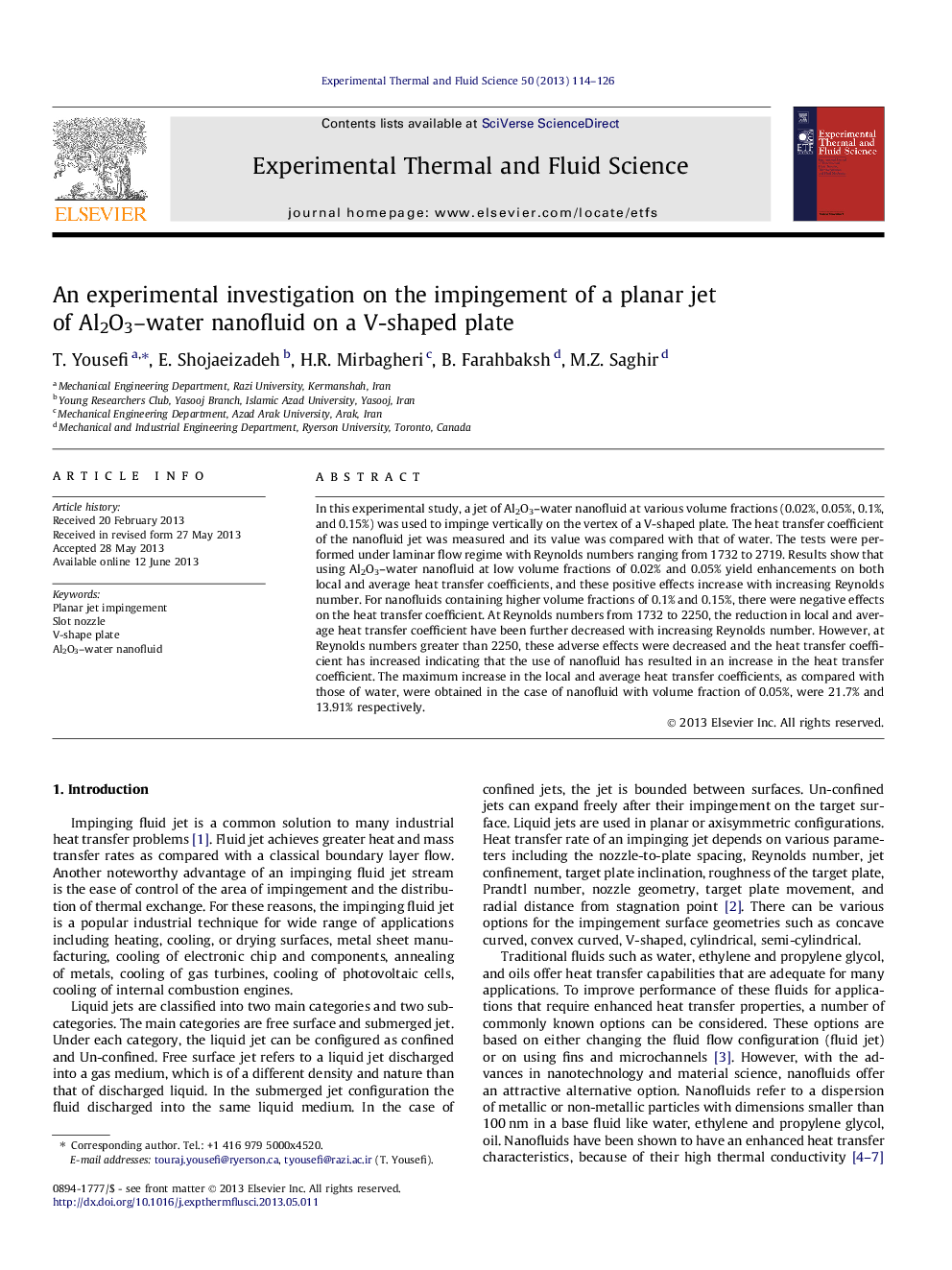| Article ID | Journal | Published Year | Pages | File Type |
|---|---|---|---|---|
| 651406 | Experimental Thermal and Fluid Science | 2013 | 13 Pages |
Abstract
In this experimental study, a jet of Al2O3-water nanofluid at various volume fractions (0.02%, 0.05%, 0.1%, and 0.15%) was used to impinge vertically on the vertex of a V-shaped plate. The heat transfer coefficient of the nanofluid jet was measured and its value was compared with that of water. The tests were performed under laminar flow regime with Reynolds numbers ranging from 1732 to 2719. Results show that using Al2O3-water nanofluid at low volume fractions of 0.02% and 0.05% yield enhancements on both local and average heat transfer coefficients, and these positive effects increase with increasing Reynolds number. For nanofluids containing higher volume fractions of 0.1% and 0.15%, there were negative effects on the heat transfer coefficient. At Reynolds numbers from 1732 to 2250, the reduction in local and average heat transfer coefficient have been further decreased with increasing Reynolds number. However, at Reynolds numbers greater than 2250, these adverse effects were decreased and the heat transfer coefficient has increased indicating that the use of nanofluid has resulted in an increase in the heat transfer coefficient. The maximum increase in the local and average heat transfer coefficients, as compared with those of water, were obtained in the case of nanofluid with volume fraction of 0.05%, were 21.7% and 13.91% respectively.
Keywords
Related Topics
Physical Sciences and Engineering
Chemical Engineering
Fluid Flow and Transfer Processes
Authors
T. Yousefi, E. Shojaeizadeh, H.R. Mirbagheri, B. Farahbaksh, M.Z. Saghir,
